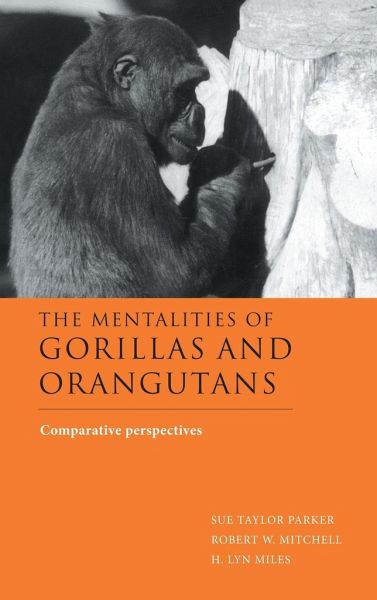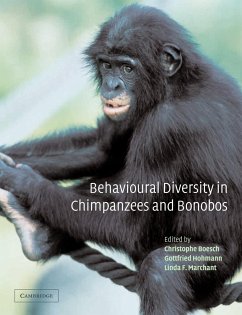
The Mentalities of Gorillas and Orangutans
Comparative Perspectives
Herausgeber: Parker, Sue Taylor; Miles, H. Lyn; Mitchell, Robert W.
Versandkostenfrei!
Versandfertig in 1-2 Wochen
137,99 €
inkl. MwSt.
Weitere Ausgaben:

PAYBACK Punkte
69 °P sammeln!
Research on the mental abilities of chimpanzees and bonobos has been widely celebrated and used in reconstructions of human evolution. In contrast, less attention has been paid to the abilities of gorillas and orangutans. This 1999 volume aims to help complete the picture of hominoid cognition by bringing together the work on gorillas and orangutans and setting it in comparative perspective. The introductory chapters set the evolutionary context for comparing cognition in gorillas and orangutans to that of chimpanzees, bonobos and humans. The remaining chapters focus primarily on the kinds and...
Research on the mental abilities of chimpanzees and bonobos has been widely celebrated and used in reconstructions of human evolution. In contrast, less attention has been paid to the abilities of gorillas and orangutans. This 1999 volume aims to help complete the picture of hominoid cognition by bringing together the work on gorillas and orangutans and setting it in comparative perspective. The introductory chapters set the evolutionary context for comparing cognition in gorillas and orangutans to that of chimpanzees, bonobos and humans. The remaining chapters focus primarily on the kinds and levels of intelligence displayed by orangutans and gorillas compared to other great apes, including performances in the classic domains of tool use and tool making, imitation, self-awareness, social communication and symbol use. All those wanting more information on the mental abilities of these sometimes neglected, but important primates will find this book a treasure trove.














